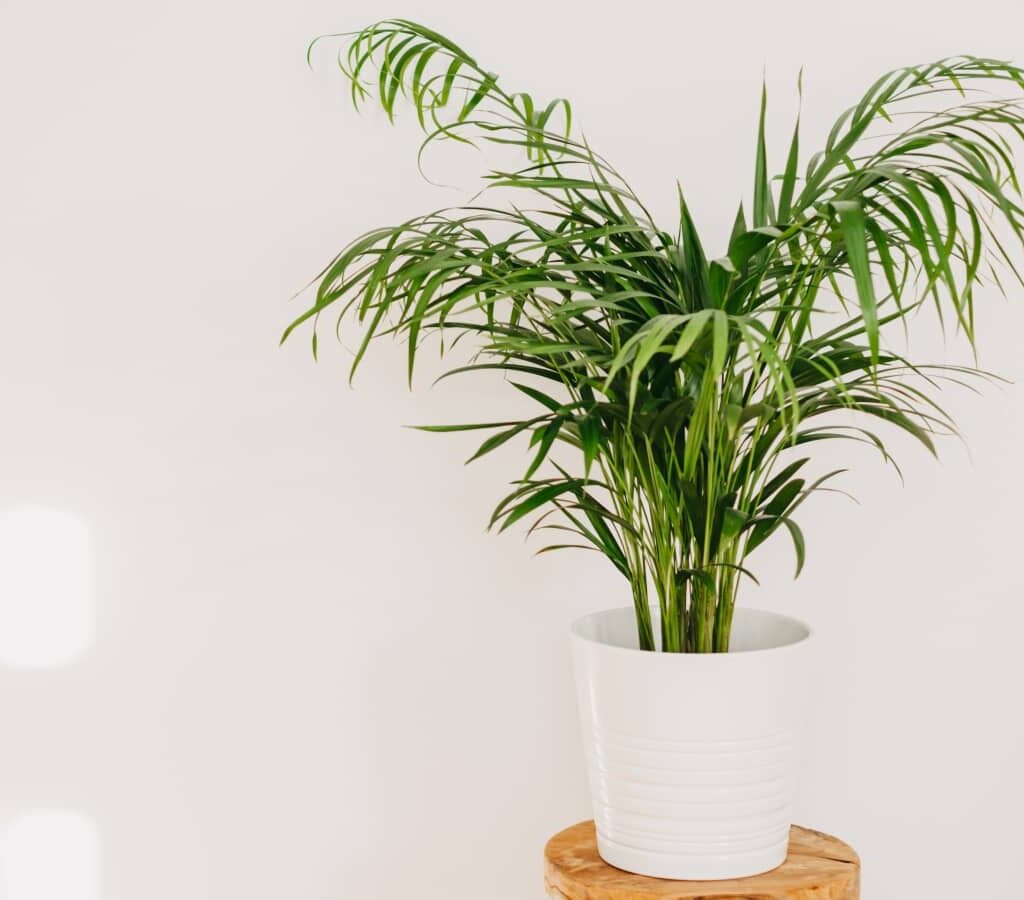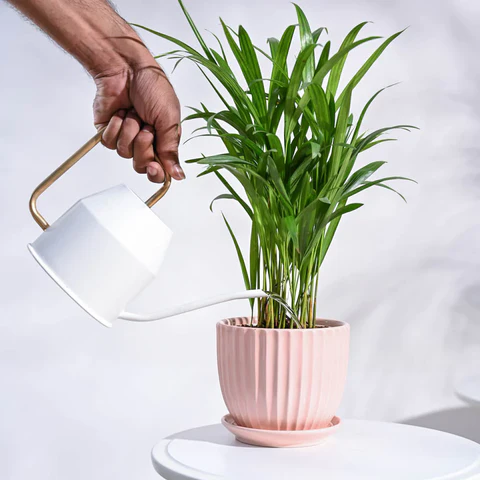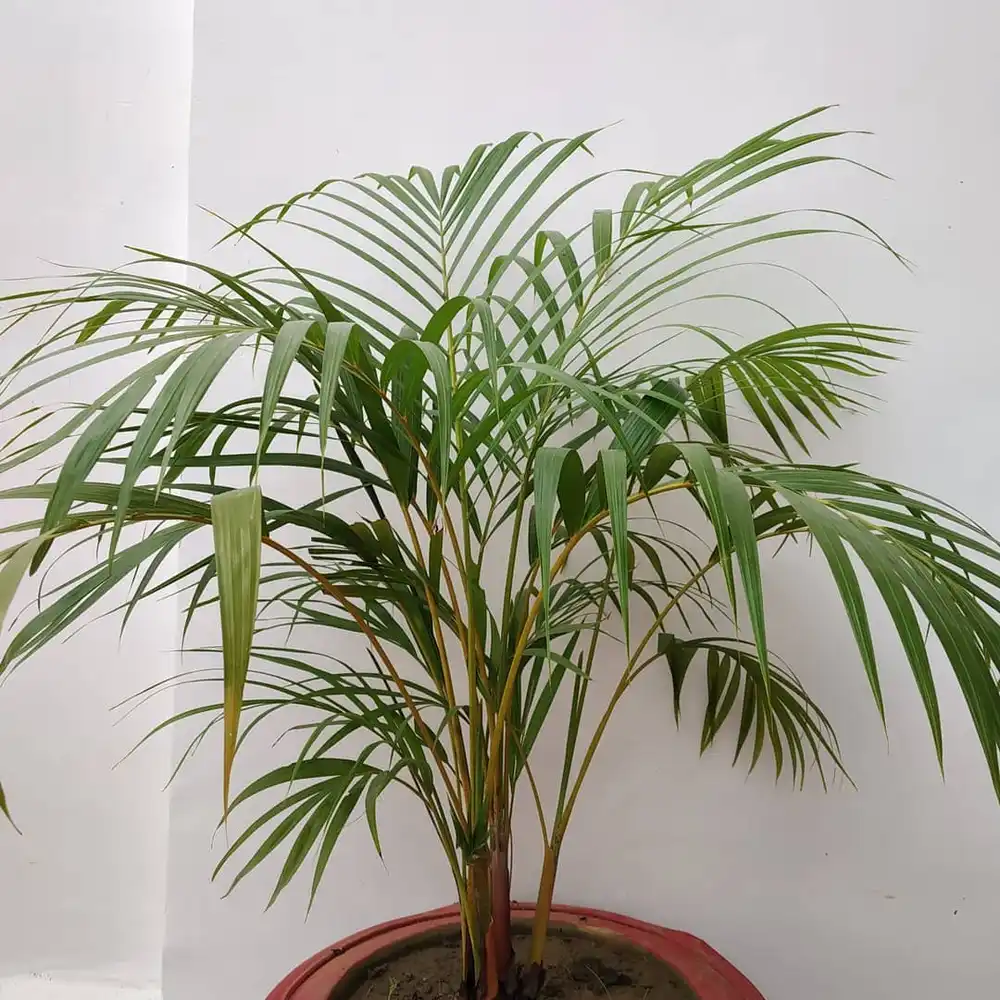The Areca Palm (Dypsis lutescens), also commonly known as the Butterfly Palm, is one of the most popular ornamental houseplants around the world. Admired for its feathery, arching fronds and tropical appearance, it’s an elegant addition to homes, offices, patios, and gardens alike. Originating from Madagascar, Areca Palms thrive in warm, humid, and indirect light conditions — much like their native tropical forests.
One of the keys to keeping an Areca Palm healthy, lush, and beautiful is understanding its watering requirements. Too much water can lead to root rot, while too little can cause the fronds to dry and brown. So, one of the most important care questions plant owners ask is:
How often should you water an Areca Palm?
In this detailed care guide, we’ll explain the ideal watering frequency for Areca Palms, factors that affect their water needs, telltale signs of underwatering and overwatering, proper watering techniques, and essential care tips to help your palm flourish indoors or out.
Introduction to Areca Palm

The Areca Palm is a clumping palm known for its narrow trunks and bright, pinnate fronds that gracefully arch, giving it a soft, airy appearance. It’s a relatively low-maintenance plant, tolerant of a range of indoor conditions if cared for properly.
However, water management is a critical aspect of Areca Palm care. Its roots prefer consistently moist but never soggy soil, and achieving this balance requires some understanding of its natural preferences.
How Often Should You Water an Areca Palm?

On average, you should water an Areca Palm every 5–7 days during the growing season (spring and summer) and every 10–14 days during its dormant season (fall and winter).
The ideal watering frequency depends on environmental factors such as light, temperature, humidity, pot size, and soil type. The most reliable method is to check the top 1–2 inches of soil and water when it feels dry to the touch.
General Watering Rule:
- Spring & Summer (active growth): Every 5–7 days
- Fall & Winter (dormancy): Every 10–14 days
Important Tip: Adjust your watering routine based on room humidity, temperature, and light conditions rather than sticking strictly to a calendar.
Factors That Affect Areca Palm Watering Frequency

Several important factors influence how often your Areca Palm needs water. Being aware of these can help you adjust your watering routine for healthier growth:
Season and Temperature
- Warmer months (spring and summer): Areca Palms grow actively and consume water faster.
- Cooler months (fall and winter): Growth slows, evaporation decreases, and water needs diminish.
Humidity Levels
Areca Palms thrive in moderate to high humidity (50–70%). Dry indoor air, especially when using heaters or air conditioners, can cause the soil to dry out more quickly.
Pot Size and Material
- Smaller pots dry out faster than larger containers.
- Terracotta pots are porous and absorb water, increasing watering frequency compared to plastic or glazed ceramic pots.
Light Exposure
Areca Palms prefer bright, indirect light. Palms kept in brighter conditions or near sunny windows may require more frequent watering due to faster evaporation.
Soil Type
A well-draining, loamy, peat-based potting mix is essential. Dense or poorly draining soil retains water for longer, increasing the risk of root rot.
Signs Your Areca Palm Needs Watering

Your Areca Palm will display several symptoms when it needs hydration. Recognizing these signs ensures timely watering and prevents plant stress:
Dry Topsoil
If the top 1–2 inches of soil feel dry, it’s time to water.
Drooping or Limp Fronds
Fronds begin to droop or lose their natural arch when the plant lacks moisture.
Brown or Crispy Leaf Tips
Low humidity and underwatering cause the tips of the fronds to dry out and turn brown.
Slow or Stunted Growth
During the growing season, underwatering can cause the plant to halt or slow new leaf development.
Signs of Overwatering an Areca Palm

While Areca Palms enjoy consistent moisture, overwatering is one of the quickest ways to harm them. Watch for these warning signs:
Yellowing Fronds
Lower fronds turning yellow is a classic sign of excessive soil moisture.
Wilting Despite Moist Soil
If fronds droop even though the soil is wet, the roots may be suffocating from excess water.
Mushy or Rotting Roots
If you inspect the roots and find them soft, mushy, and dark, root rot is likely.
Fungal Growth on Soil Surface
A moldy or musty odor or white fuzz on the soil surface indicates poor drainage and excessive moisture.
How to Properly Water an Areca Palm
Knowing when to water is important, but how you water makes a big difference too. Follow these best practices:
Use the Soak and Drain Method
- Water the soil evenly and thoroughly until it drains freely from the pot’s bottom holes.
- Discard any excess water collected in the saucer after 15 minutes to avoid soggy roots.
- Allow the top 1–2 inches of soil to dry before watering again.
Tip: Always use a pot with adequate drainage holes to prevent waterlogging.
Use Lukewarm or Room-Temperature Water
Avoid using cold water, which can shock the plant’s roots. Room-temperature or slightly warm water works best.
Check Soil Moisture Regularly
Test the top layer of soil with your finger or a moisture meter before each watering.
Seasonal Watering Adjustments for Areca Palm
Here’s a helpful seasonal guide to adjusting your watering routine:
| Season | Watering Frequency | Notes |
|---|---|---|
| Spring/Summer | Every 5–7 days | Active growth, higher heat, and faster evaporation increase water needs. |
| Fall/Winter | Every 10–14 days | Cooler temperatures slow down water absorption and growth. |
Always monitor the soil moisture before watering — never rely solely on a fixed schedule.
Best Type of Water for Areca Palms
Areca Palms are sensitive to chemicals like chlorine, fluoride, and salts commonly found in tap water. These can cause brown leaf tips and damage over time.
Ideal Water Choices:
- Filtered water
- Distilled water
- Rainwater
- Dechlorinated tap water (let sit for 24 hours)
Using clean, chemical-free water helps maintain the plant’s vibrant, lush appearance.
Additional Areca Palm Care Tips
To keep your Areca Palm healthy beyond proper watering, follow these general care guidelines:
- Light: Prefers bright, indirect light; avoid direct sun which can scorch leaves.
- Humidity: Maintain 50–70% humidity; use a humidifier or mist regularly in dry climates.
- Soil: Use a well-draining, peat-based, organic potting mix.
- Temperature: Keep between 65–80°F (18–27°C); avoid cold drafts and sudden temperature changes.
- Fertilizing: Feed with a diluted liquid fertilizer every 4–6 weeks during the growing season.
- Pruning: Trim off yellow or brown fronds to encourage new growth.
- Repotting: Repot every 2–3 years or when the plant becomes root-bound.
Why It’s Better to Underwater Than Overwater
Areca Palms recover more easily from slight underwatering than from overwatering, which can quickly lead to irreversible root rot. When uncertain, wait a day or two before watering and check the soil moisture level first.
If in doubt, let the top layer of soil dry slightly before watering again.
Conclusion
How often should you water an Areca Palm?
The ideal schedule is every 5–7 days during the growing season (spring and summer) and every 10–14 days during the dormant season (fall and winter). The key is to check the top 1–2 inches of soil regularly and water only when it feels dry.
By practicing consistent soil monitoring, using the proper watering technique, choosing the right water type, and adjusting for seasonal changes, you can enjoy a healthy, vibrant Areca Palm that brings tropical charm and lush greenery into your living space.




Leave A Comment